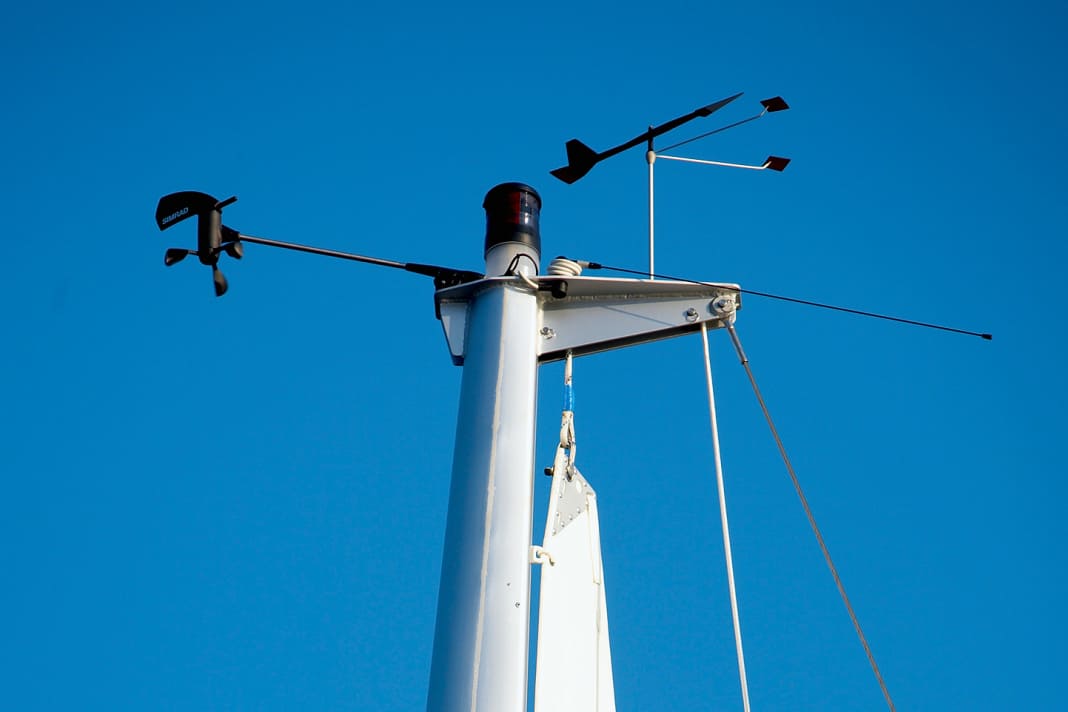



The article series
Simple wind measuring systems only display the apparent wind, which is the result of the true wind and the airstream and corresponds to the wind felt on board (read more in this article). In this case, it is sufficient to pre-adjust the wind direction to the same indicated wind angle at the optimum height to port and starboard.
For systems that also indicate the true wind, the Adjustment with the logger. Their data must be correct for the wind calculations to be correct. Even better, if the speed over ground can be selected from the GPS as a speed reference, then errors due to current and log are eliminated.
The values are never correct
Anyone hoping to get precise values for knots and degrees after a single adjustment in any weather will be disappointed. On sailing yachts, your own rig has too great an influence on the results. Regatta systems therefore work with different data sets, depending on wind, course, trim and sail handling. In addition, wind speed and incidence differ between the masthead and the sail pressure point. This effect depends on the wind strength and even the weather conditions. For cruising sailors, it is advisable to set the sail at the average wind speed typical for the sailing area.
Adjusting the wind sensor
Adjusting the wind transmitter is the most uncertain task. Pre-adjustment begins with the mast lying flat: align the neutral spreaders horizontally with the spirit level; for swept spreaders, bring the wire bushings to the same height. A simple plumb bob shows the pre-alignment for the wind measuring system. If the mast is straight in the track, it should also fit when the ship is rigged. Check: If there is very little wind or a lull, motor at high speed exactly against the wind - the display should show 0 degrees.
Correct the advance direction
However, no ship runs as high to port as it does to starboard. To ensure that the autopilot nevertheless turns correctly according to the wind vane, its direction of advance is not set exactly amidships, but is deliberately twisted with the pre-adjustment on the instrument so that the optimum height on each bow results in the same wind angle. This means that although the system determines the geographical wind direction a few degrees incorrectly, the tacking angles are correct.
The optimum misadjustment depends on the wind speed. For cruising sailors, it is sufficient to carry out the adjustment once at 4 to 5 Beaufort.
Setting the wind speed
The wind speed display cannot be adjusted on many systems. If it is, the errors can only be minimised step by step: run alternately against and with the wind under engine power at a moderate speed, adjusting so that the true wind displayed is the same in both cases. This means a lot of trial and error, but you can't be more precise without expensive measuring equipment. Under sail, however, there will still be slight deviations in the true wind for both cross and centre-sail, as the sails change the airflow over the mast.
